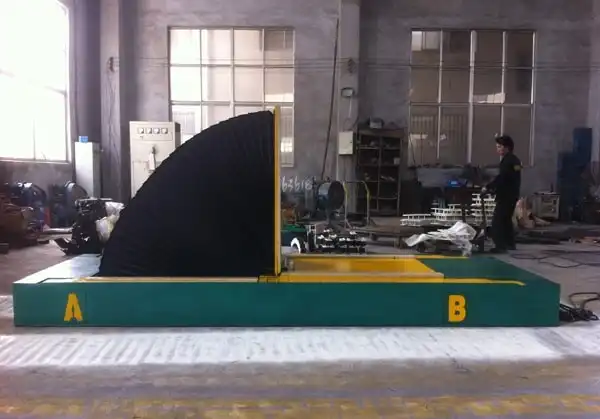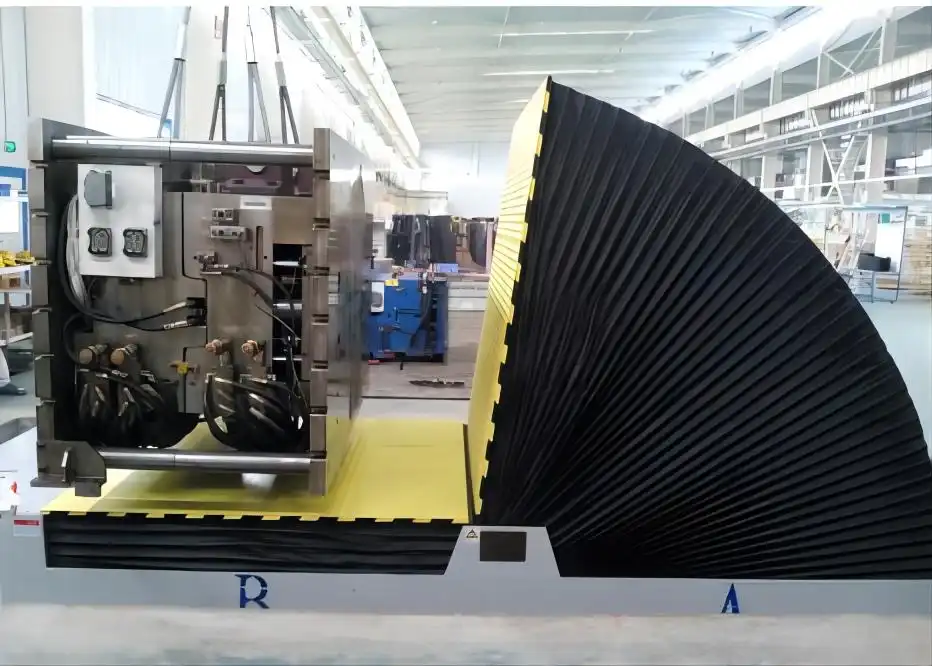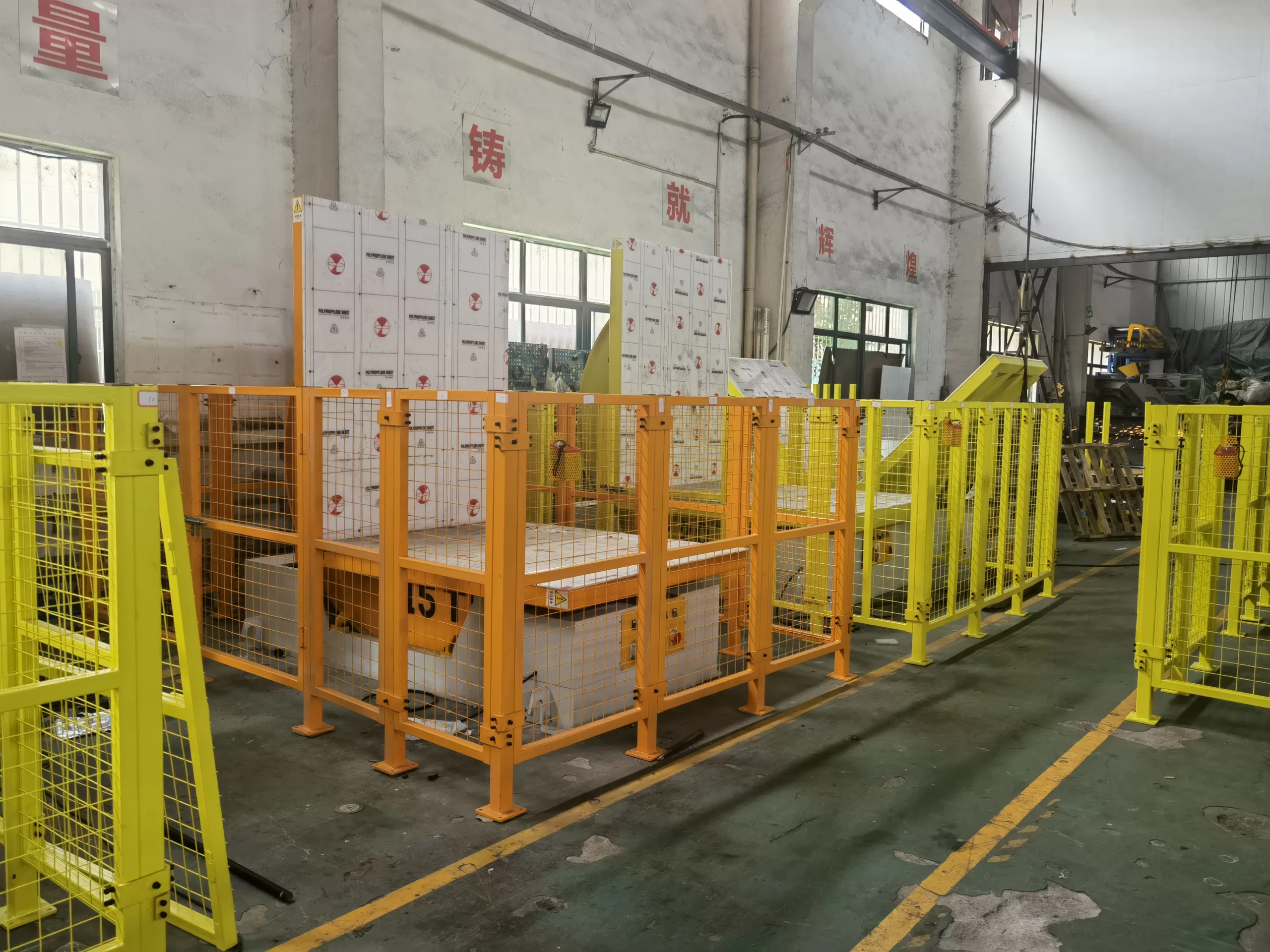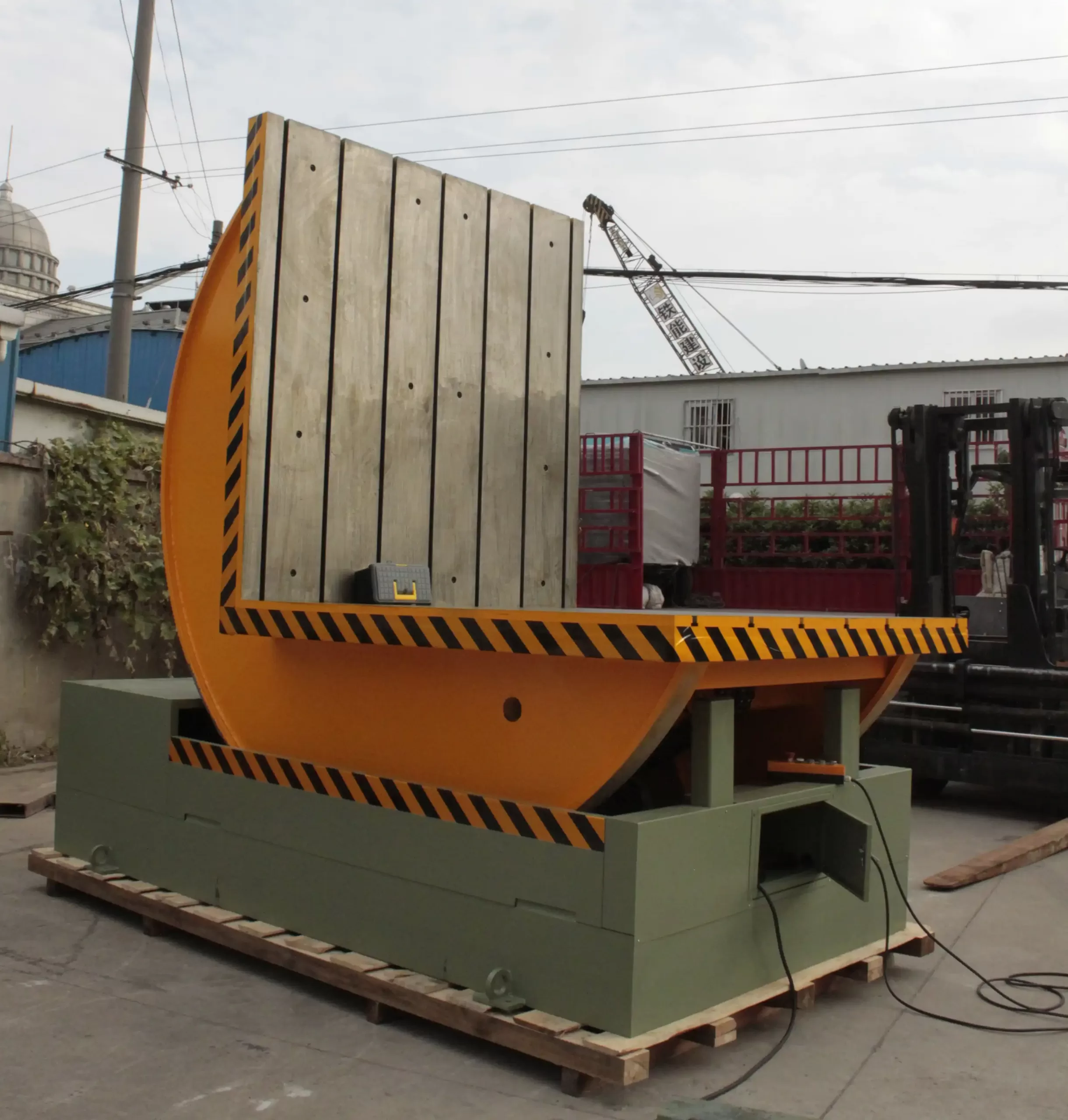Mold Flipper Procurement: Do EPCs Prefer CE-Marked Equipment for Mega-Projects?
When you are steering a mega-project, like a new steel production line, every decision carries immense weight. You are coordinating with Engineering, Procurement, and Construction (EPC) firms, managing massive capital investments, and keeping an eye on timelines that are measured in months, not days. Then, a specification for a piece of equipment like a mold flipper lands on your desk, and it includes a specific requirement: "CE-marked." This might seem like a small detail in a project costing hundreds of millions, but it raises critical questions. You start to wonder if this European standard is an absolute necessity for your project in Mexico, or if it's an expensive preference that could be re-evaluated. This uncertainty can be frustrating, as it pits your need for cost-efficiency against the EPC's need for standardized risk management, potentially leading to delays and budget overruns if not handled with clarity. As an engineer who has built a factory from the ground up, I understand this tension. I've dedicated my career to not just building machines, but to providing solutions. I want to share my knowledge to help you navigate these procurement challenges and make the most informed decision for your plant's future.
EPCs often prefer CE-marked equipment for mega-projects, even those outside the European Union, because it serves as a reliable and internationally recognized benchmark for safety, design, and comprehensive documentation. However, it is not always a strict mandate. The preference is frequently weighed against project-specific requirements, binding local regulations like NOM in Mexico, overall cost-effectiveness, and the availability of viable alternatives that can demonstrate an equivalent level of safety and quality assurance.

This preference from EPCs isn't arbitrary. It's rooted in their core function: managing and mitigating risk across massive, complex projects. They work with global teams, diverse component suppliers, and international financing bodies. A standard like the CE mark creates a common language for safety and quality. But as the plant owner, you have the final say and the ultimate responsibility for your facility's performance and budget. Understanding the nuances behind this preference is the first step. It empowers you to engage in a more strategic dialogue with your EPC partners, moving the conversation from a simple "yes or no" on a certificate to a collaborative discussion about what truly constitutes a safe, reliable, and valuable investment for your operation. Let's dive deeper into what this all means in practice.
What exactly is a CE mark and why does it matter for industrial equipment like mold flippers?
You see the "CE" logo on countless products, from consumer electronics to industrial machinery. But when it comes to a heavy-duty piece of equipment like a mold flipper, which is responsible for safely handling multi-ton loads, what does that little mark actually guarantee? It's easy to get lost in the technical jargon and regulatory details. This confusion can be costly. You might end up overpaying for a certification that isn't strictly necessary for your region, or worse, you could underestimate the importance of the safety principles it represents and choose equipment that exposes your team and your production to unnecessary risks. Let's cut through the noise. As a manufacturer, I deal with these standards every day. I'll break down what the CE mark means in practical, no-nonsense terms that an engineer and a business owner can appreciate.
The CE mark, which stands for "Conformité Européenne," is a mandatory certification mark indicating that a product, such as a mold flipper, complies with the European Union's essential health, safety, and environmental protection legislation. For a manufacturer, applying this mark is a formal declaration that the equipment meets all relevant EU directives, making it a globally recognized symbol of thorough engineering, operational safety, and design integrity.

A Declaration of Safety, Not a Mark of Quality
First, it is crucial to understand a key distinction. The CE mark is not a quality mark. It does not certify that a mold flipper will have the fastest cycle time or the highest precision. Those are performance metrics determined by the manufacturer's design and engineering skill. Instead, the CE mark is a safety and compliance mark. It declares that the machine has been designed and built to be fundamentally safe to operate and will not endanger people or the environment.
This is a legal declaration made by me, the manufacturer. To affix that mark, I must conduct a thorough conformity assessment. This involves a comprehensive risk analysis of the machine, ensuring all potential hazards are identified and mitigated. I then have to compile a detailed technical file that proves compliance and finally sign an official EU Declaration of Conformity. This process places the full responsibility for the machine's safety squarely on my shoulders.
Key Directives for a Mold Flipper
For a machine like a mold flipper, several EU directives are central to the CE marking process. Each one addresses a different aspect of the machine's design and construction to ensure holistic safety.
| EU Directive | Relevance to a Mold Flipper | Key Safety Requirements |
|---|---|---|
| Machinery Directive (2006/42/EC) | This is the primary directive for any industrial machine. It covers the mechanical and structural integrity of the equipment. | - Proper guarding for moving parts. - Emergency stop systems that are easily accessible. - Load stability and structural calculations to prevent failure. - Clear and unambiguous operator controls. |
| Low Voltage Directive (2014/35/EU) | This directive applies to all electrical equipment operating within certain voltage limits, which includes the control panels and motors of a mold flipper. | - Protection against electric shock. - Proper insulation and component selection. - Prevention of hazards from high temperatures or arcs. |
| EMC Directive (2014/30/EU) | The Electromagnetic Compatibility Directive ensures the machine does not interfere with other electronic devices and is not affected by them. | - Limiting electromagnetic emissions. - Ensuring immunity to external electromagnetic disturbances. - Critical for modern plants with many sensitive electronic systems. |
For a plant owner like Javier, understanding this breakdown is vital. When an EPC specifies a CE-marked mold flipper, they are asking for a machine that has been formally verified against these comprehensive safety pillars. It provides them, and you, with the assurance that the equipment has undergone a rigorous, documented process designed to prevent accidents before they can happen.
How do EPCs weigh the costs and benefits of CE-marked equipment in their procurement process?
You are looking at two quotes for a mold flipper. One is CE-marked and costs more. The other is from a reputable supplier but lacks the certification, and the price is more attractive. Your EPC partner is strongly recommending the CE-marked option. This can put you in a tough spot. You’re rightly concerned about keeping your mega-project on budget, and you might wonder if the EPC is just being overly cautious at your expense. It can feel like their internal policies are adding unnecessary costs to your bottom line. I've worked alongside many EPCs on large-scale projects. Their decision-making is not arbitrary. It's a calculated process of balancing risk, liability, and project efficiency. Let's look at how they see it from their side of the table.
EPCs evaluate CE-marked equipment by systematically balancing its higher initial purchase price against significant long-term benefits. These benefits include drastically reduced project risk, streamlined approval processes with international stakeholders, a guaranteed baseline of safety standards, and simplified integration. For an EPC, the CE mark is a powerful tool for de-risking a project from both a technical and a liability perspective.

Risk Management is an EPC's Primary Job
An EPC firm's fundamental promise to you, the client, is to deliver a fully functional plant on time and on budget. They are liable for the entire project, from the foundation to the final commissioning. A single equipment failure, especially one that causes a safety incident, can have catastrophic consequences for the project's timeline, budget, and the EPC's reputation. From their perspective, a CE mark is a form of insurance. It provides documented proof that they have performed their due diligence in selecting safe and compliant machinery. In the event of an incident or an audit, the CE technical file is a powerful legal document that demonstrates the equipment met stringent safety standards at the time of purchase. This is not about being overly cautious; it's about responsible project management on a massive scale.
Standardization in a Globalized World
Mega-projects are rarely a local affair. The EPC might be from Germany, the financing from a bank in London, the engineering consultants from the United States, and the project site in Mexico. In this global environment, standards create a common language. A CE mark provides an internationally understood benchmark for machine safety. An engineer in Munich can look at the specifications for a CE-marked mold flipper and know exactly what level of safety to expect regarding its electrical systems, guarding, and controls. This standardization simplifies communication, reduces ambiguity in contracts, and makes the integration of equipment from various global suppliers much smoother.
The EPC's Cost-Benefit Analysis
While you see the immediate line-item cost, the EPC is looking at a much broader financial picture that includes potential risks and hidden expenses. Here’s a simplified look at their decision matrix:
| Decision Factor | The Pro-CE Argument (Benefit) | The Con-CE Argument (Cost/Drawback) |
|---|---|---|
| Direct Cost | Higher initial purchase price. | Lower initial purchase price. |
| Risk & Liability | Significantly lower. The CE mark transfers a portion of the safety compliance liability to the manufacturer. It acts as a shield against potential legal and financial claims. | Higher. The EPC and client assume more responsibility for verifying the machine's safety, which requires more engineering hours and potential third-party inspections. |
| Project Timeline | Potentially faster. Approvals from international financiers or insurance companies can be streamlined. Less time needed for internal safety reviews. | Potentially slower. The machine may require extensive on-site modifications or additional third-party validation to meet project safety standards, causing delays. |
| Documentation | Guaranteed. A comprehensive technical file is a mandatory part of the CE process, which simplifies commissioning and maintenance. | Variable. Documentation from non-certified suppliers can be inconsistent, requiring extra effort to create proper maintenance and safety manuals. |
I once worked on a project for a large steel mill in the Middle East. The client's EPC partner, a Korean firm, insisted on CE marking for all major equipment, including our coil packing lines. The reason? The project was being financed by a consortium of European banks. The banks' technical advisors used CE compliance as a key criterion in their due diligence process. For the EPC, ensuring this compliance from the start made the financing approvals faster and smoother, saving them time and potential headaches that were far more valuable than the marginal cost increase on the equipment. This is the kind of strategic thinking that drives their preference.
Are there viable alternatives to CE marking for projects outside the EU, like in Mexico?
You're a practical business owner. Your steel mill operates in Mexico, under Mexican law. So, you rightly ask, "Why should a European standard be the default for my project?" Pushing for a more localized or globally accepted alternative makes perfect business sense. However, challenging your EPC's recommendation can be a delicate conversation. You don't want to give the impression that you are trying to cut corners on safety or quality. The key is to approach this discussion not from a position of simple cost-cutting, but from a position of informed, equivalent compliance. You can absolutely achieve the same level of safety and reliability without a CE mark, but you need to know what to propose instead.
Yes, there are several robust and viable alternatives to CE marking for mega-projects located outside the European Union. The most effective alternatives include demonstrating full compliance with mandatory national standards like NOM in Mexico, adhering to globally recognized international standards from bodies like ISO, or obtaining third-party certification from respected agencies such as UL or TÜV. The ultimate goal is to provide clear, documented proof that the equipment meets an equivalent or higher level of safety.

Prioritize Mandatory National Standards
The first and most important alternative is compliance with the laws of the country where the equipment will operate. In your case, this means the Norma Oficial Mexicana (NOM) standards. These are not optional; they are the law. A good equipment manufacturer should be able to design and build a mold flipper that specifically meets all relevant NOM standards for electrical safety, machine guarding, and workplace safety. When you discuss this with your EPC, framing the conversation around "ensuring full NOM compliance" is a powerful approach. It shows that your priority is adherence to local regulations, which is a non-negotiable aspect of any project.
Leverage International Standards (ISO/IEC)
Beyond national laws, there are international standards that are respected worldwide. The International Organization for Standardization (ISO) and the International Electrotechnical Commission (IEC) publish standards that are often the basis for both CE marking and other national standards. For example, ISO 12100 is the fundamental global standard for the safety of machinery. It outlines the principles for risk assessment and risk reduction. A manufacturer who can demonstrate that their design process is fully compliant with ISO 12100 is already meeting the core principles of the EU's Machinery Directive. This provides a common, non-regional benchmark that most EPCs will recognize and accept.
The Power of Third-Party Certification
Sometimes, an EPC or client wants the additional assurance of an independent review. This is where third-party certification bodies come in. In North America, UL (Underwriters Laboratories) is the most recognized mark, especially for electrical panels and components. A mold flipper with a UL-listed control panel provides strong evidence of electrical safety and quality. Other globally respected bodies like TÜV SÜD or Intertek can also perform independent assessments and provide a certificate of compliance against a specific set of standards. This approach can be a perfect middle ground, providing the independent verification the EPC desires without being tied specifically to a European standard.
Here’s a comparison to help you position these alternatives:
| Standard / Certification | Geographic Focus | Key Aspect Covered | When to Propose It |
|---|---|---|---|
| CE Mark | European Economic Area | A legal declaration of compliance with all relevant EU health and safety directives. | When the project has strong European ties (EPC, financing, or end-client). |
| NOM | Mexico | Mandatory legal compliance for products sold and operated in Mexico. Covers safety and specific technical requirements. | For any and all projects in Mexico. This is the baseline requirement. |
| UL Certification | Primarily North America | Focuses heavily on electrical safety, fire risk, and shock hazards. Primarily for components and control panels. | For projects in Mexico, the US, or Canada, especially to assure your local maintenance teams who are familiar with UL standards. |
| ISO Standards | Global | Provides a framework and principles for management systems, risk assessment (ISO 12100), and quality (ISO 9001). | To demonstrate a robust, globally recognized engineering and design process, regardless of the final certification mark. |
As a manufacturer, my goal at SHJLPACK is to be flexible. We have designed machines to meet CE standards for European clients, built machines with UL-certified panels for our North American partners, and always ensure our equipment complies with the local regulations of the destination country. A capable supplier should be able to have this conversation with you and your EPC, presenting a solution that prioritizes safety and meets the right set of standards for your specific needs.
My perspective on choosing the right mold flipper for your project
After all the discussions about standards, regulations, and EPC preferences, the final decision comes down to you. You are the one who has to sign the purchase order and live with this machine for the next 15-20 years. The sheer number of factors can feel overwhelming. You're balancing a multi-million dollar budget, a tight project schedule, and the absolute priority of your team's safety. Making the wrong choice could lead to a machine that is unreliable, unsafe, or fails a critical site audit, causing production stoppages and costing you far more than any initial savings. I've been in the trenches of machine design and manufacturing my entire career. I built my own factory after learning the ropes as an engineer. So, let me give you my direct, practical advice, engineer to engineer.
My advice is to look beyond the certification sticker and focus intensely on the manufacturer's engineering competence and their commitment to transparency. The best equipment partner won't just sell you a CE-marked machine; they will work with you and your EPC to define and engineer a solution to the right standard for your specific project, location, and risk profile, ensuring you get proven safety and real value, not just a symbol.

Start with a Risk Assessment, Not a Certificate
The most important question is not "Is it CE marked?". The most important question is "What are the specific operational risks we need to mitigate in our plant?". Sit down with your safety and operations teams. Analyze the workflow. What are the weights of the molds? How often will they be flipped? What is the surrounding environment like? A good supplier should be asking you these questions. The machine's design—its structural calculations, the placement of its E-stops, the design of its hydraulic or electrical systems—should be a direct response to your specific risks. The certification is the final step that verifies this process was done correctly. Don't let the certificate become a substitute for a thorough, application-specific engineering review.
The Technical File is More Important Than the Sticker
Any factory can put a sticker on a machine. But only a competent engineering company can produce the detailed documentation to back it up. Whether you are asking for a CE mark or an alternative, always demand to see the core components of the technical file.
This is what you, as an engineer or CEO, should be scrutinizing:
- Structural Calculations: Ask for the Finite Element Analysis (FEA) reports or beam calculations that prove the machine's frame can handle well beyond its stated maximum load without failing.
- Electrical and Hydraulic Schematics: These should be clean, professional, and use standard symbols. They are the roadmap for your maintenance team.
- Safety Circuit Analysis: The design of the safety system (E-stops, light curtains, interlocks) should be documented and validated. How does it achieve its required safety level?
- Component List: The supplier should be transparent about the key components they use (motors, gearboxes, bearings, PLC). Are they from reputable brands that you can easily source for spares?
A manufacturer who readily provides this information is confident in their work. One who hesitates or makes excuses is a red flag. This documentation is the true proof of quality and safety.
I remember a client in a situation very similar to Javier's. He was expanding his facility in Latin America and his European EPC partner specified a CE-marked mold tilter. The client was concerned about the cost and the relevance. I flew down and we had a three-way meeting: my team, the client's engineering team, and the EPC project manager. Instead of just debating the CE mark, I opened our technical file on my laptop. We walked them through the structural analysis, showed them our compliance with the ISO 12100 risk assessment process, and highlighted that all our electrical components were UL-listed, which the client's local maintenance staff preferred. We demonstrated that our machine met the substance of the CE directives and was fully compliant with all local laws. The EPC, seeing the depth of our engineering work, agreed that our solution met their risk management needs. The client got a machine perfectly suited to his operation and saved over 15% on the cost. That is what a true partnership looks like. It's about solving the problem, not just selling a product.
Conclusion
Ultimately, choosing the right mold flipper is about collaborative engineering and transparent risk management, not just checking a box for a CE mark on a procurement sheet.




